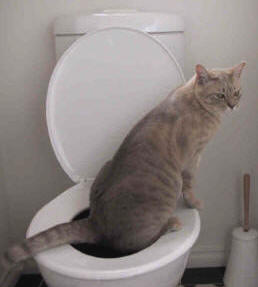Your Value of Proper Disposal of Animal Waste
Your Value of Proper Disposal of Animal Waste
Blog Article
What are your ideas on 10 Things You Should Never Flush Down The Toilet?

When it involves throwing away waste, particularly animal waste, many people often turn to the practical alternative of flushing it down the toilet. Nonetheless, this relatively easy remedy can have major effects for the atmosphere and public health. In this write-up, we'll check out why flushing animal waste down the commode is a negative idea and give alternate methods for proper disposal.
Introduction
Proper garbage disposal is critical for keeping environmental sustainability and public health. While it might appear harmless to purge animal waste down the commode, it can result in various problems, both for the environment and human health.
Risks of flushing pet waste
Environmental influence
Purging animal waste introduces harmful germs and virus right into rivers, which can negatively influence marine environments. These microorganisms can pollute water sources and harm marine life, disrupting delicate communities.
Public health problems
Animal waste contains damaging germs such as E. coli and Salmonella, which can posture severe wellness dangers to humans. Flushing animal waste down the toilet can contaminate water products, resulting in the spread of conditions and infections.
Alternatives to flushing
Instead of flushing animal waste down the toilet, there are a number of alternate disposal methods that are a lot more eco-friendly and hygienic.
Composting
Composting animal waste is an environmentally friendly way to take care of it. By composting, raw material is broken down into nutrient-rich soil, which can be used to feed gardens and plants.
Landfill disposal
Taking care of pet waste in a garbage dump is an additional option. While not as environmentally friendly here as composting, it is a much safer choice to flushing, as it stops the contamination of water resources.
Pet waste disposal systems
There are specialized pet waste disposal systems available that securely and hygienically dispose of animal waste. These systems usually use enzymes to break down waste and eliminate smells.
Actions to appropriate animal waste disposal
To make sure appropriate disposal of animal waste, follow these actions:
Scooping and landing waste
Routinely scoop and bag pet waste utilizing biodegradable bags. This stops waste from infecting the setting.
Making use of designated waste containers
Dispose of bagged animal waste in designated waste bins, such as garden compost containers or land fill bins. Prevent flushing it down the commode in all costs.
Cleaning litter boxes and animal locations consistently
Regularly clean can and pet dog locations to prevent the buildup of waste and bacteria. Usage pet-safe cleansing items to preserve hygiene.
Benefits of proper disposal methods
Taking on correct disposal techniques for animal waste offers several advantages:
Minimized environmental pollution
Proper disposal approaches minimize the risk of environmental pollution, protecting waterways and ecosystems from contamination
Minimized threat of water contamination.
By avoiding flushing animal waste down the bathroom, the danger of water contamination is dramatically decreased, securing public health.
Improved sanitation and health
Appropriate disposal techniques advertise far better sanitation and hygiene, creating a safer atmosphere for both people and pets.
Verdict
Finally, purging pet waste down the bathroom is unsafe to the setting and public health. By taking on alternate disposal techniques and complying with proper waste monitoring techniques, we can minimize the adverse influence of animal waste and contribute to a cleaner, much healthier world.
What To Do With Dog Poo – The Do's And Don'ts Of Disposing Of Faeces
Dog poo bins
Some councils provide dedicated dog waste bins in popular dog-walking areas that can take dog poo that has been bagged but you can legally dispose of dog waste in any public litter bin, as long as it is securely bagged. This also applies to your wheelie bin at home.
Do not flush
Water companies do not recommend flushing dog faeces down the toilet because certain parasites can survive the water processing treatment and are potentially harmful to humans. You should also never consider flushing dog poo that has been bagged down the toilet as the bags will not break down and instead create severe blockages in the sewage system.
In the woods
The Forestry Commission promotes a ‘stick and flick’ method for dealing with waste in the woods. This means finding a stick and using it to flick any poo from off the path so that it is out of the way of other walkers. You could also bury it as long as it is not in an area where there might be livestock.
Livestock
Parasites found in dog poo can be transmitted to livestock if they inadvertently eat infected faeces that has been left on grazing land. This could result in the death of sheep or abortion in cattle so you should always make sure you pick up your dog’s waste in fields where livestock could be present.

I discovered that review about when perusing the search engines. Do you know about another individual who is intrigued by the topic? Do not hesitate to promote it. I am grateful for being here. Revisit us soon.
Click Here Report this page